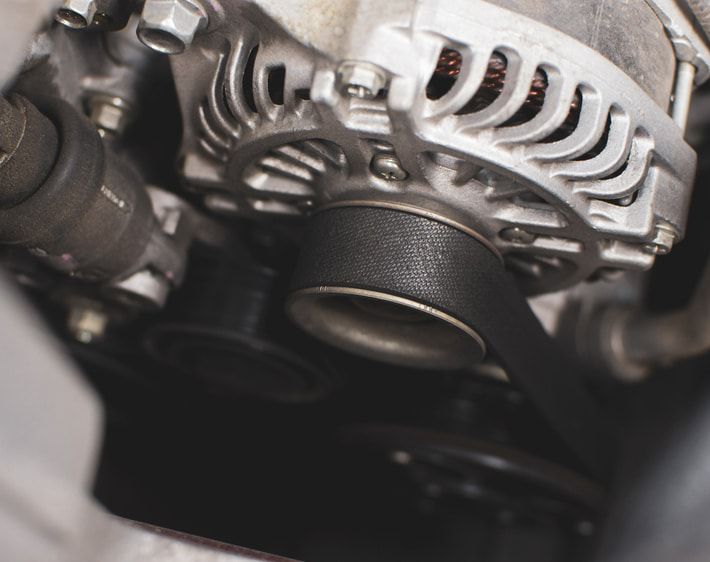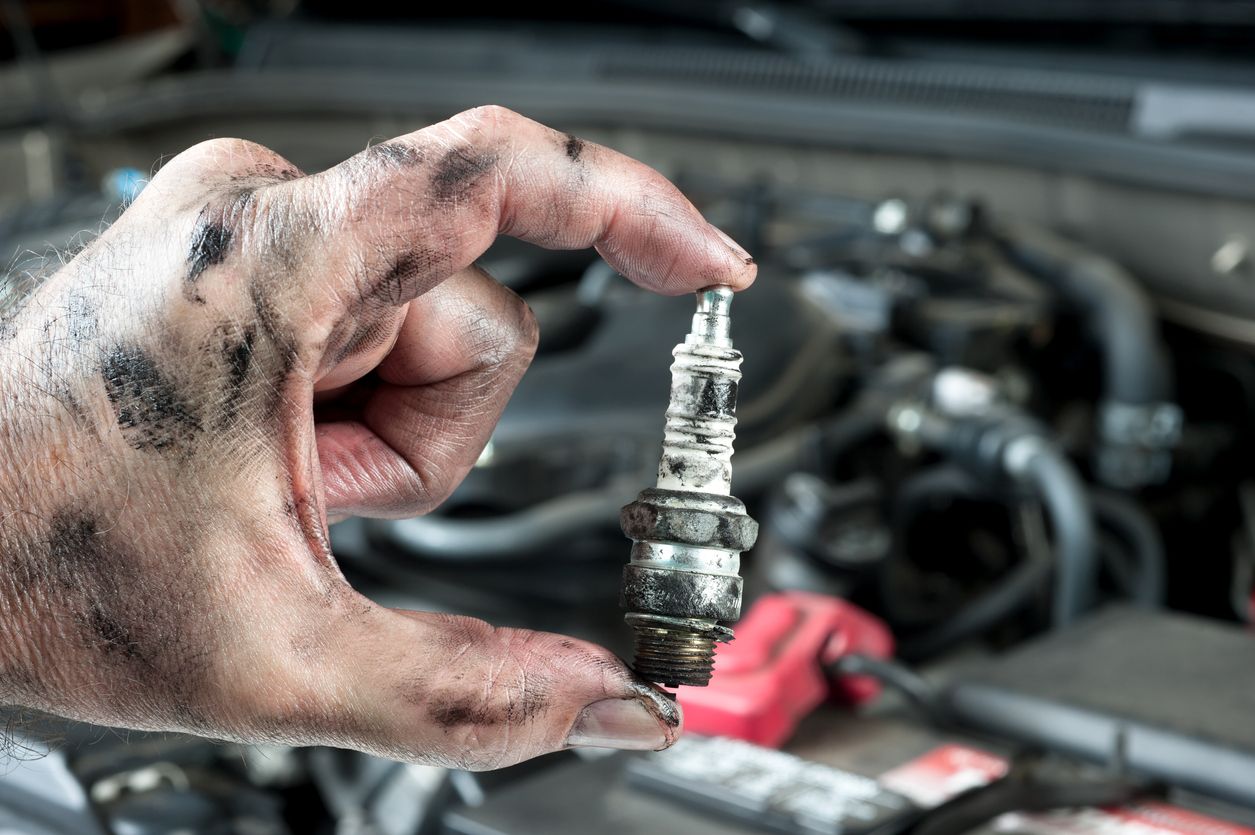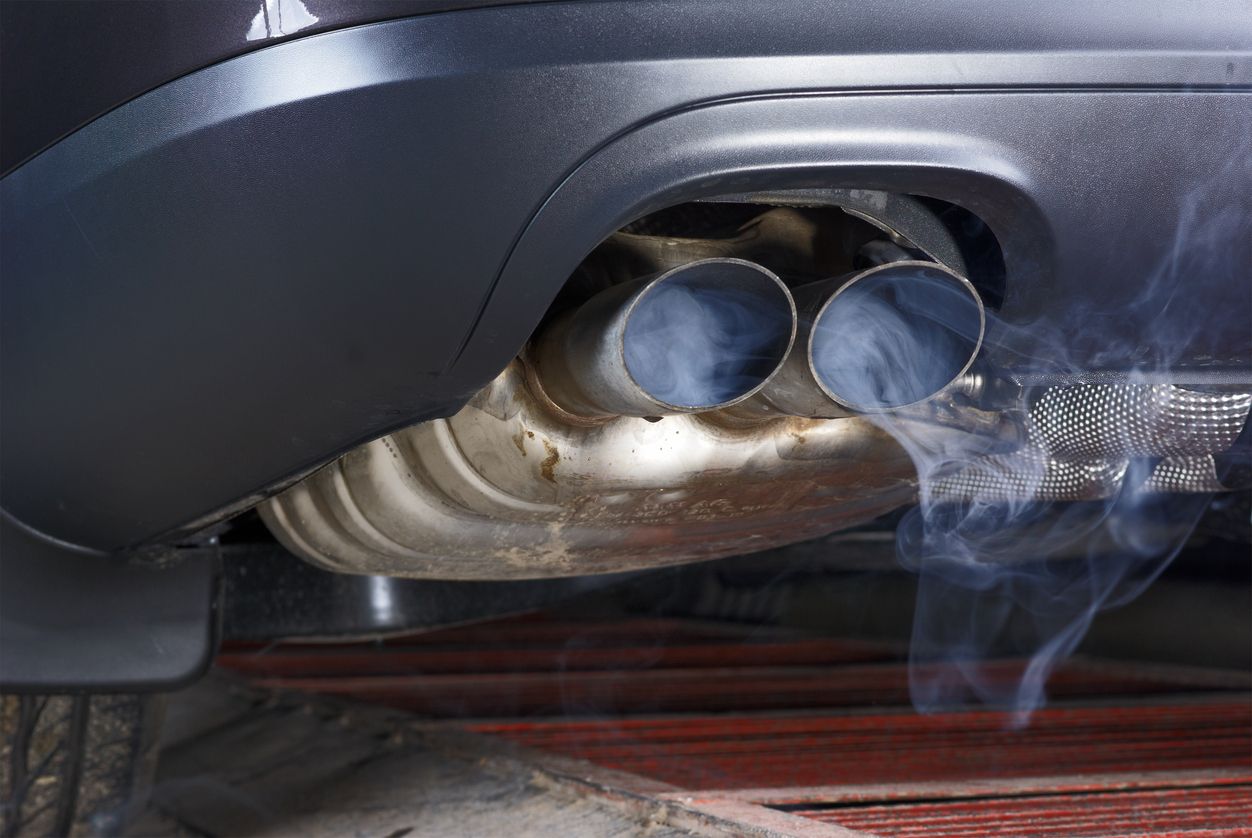When it comes to powering your car's radio, headlights, and other electronic components, you may think the battery puts in all the work. In reality, it's your alternator that keeps things up and running. But what exactly does an alternator do, and how does it work? Read on to discover what makes your alternator so essential and how to recognize car alternator problems before they become a major issue.
What Is a Car Alternator?
Your alternator is one of three main parts that make up your vehicle’s electric charging system. (The battery and voltage regulator are the other two.) It looks like a small cylindrical generator, and you can typically find it bolted to the engine.
What Does an Alternator Do?
The battery is essential for starting your vehicle when it’s off, but what is the purpose of an alternator in a car? It supplies electricity to the battery and electrical system to keep your car alive when the engine is running.
As you drive around or idle, the alternator powers key components like headlights, dashboard lights, power windows, radio, air conditioning, and other electrical features. Its role in recharging your car battery while driving is equally important, ensuring your battery is always ready for the next start.
How Does a Car Alternator Work?
Your car's alternator generates electricity by converting mechanical energy from the engine into electrical energy. When the engine runs, it spins a belt connected to the alternator, which turns a rotor inside. This motion creates alternating current (AC), which is converted into direct current (DC) to power your car's electrical systems.
Alternator Components
Several parts work together to help your alternator generate electricity. Here’s a closer look at each of them:
- Pulley: A pulley on the exterior of your alternator is turned by a drive or serpentine belt connected to the engine’s crankshaft. This movement powers the alternator by providing mechanical energy that it can convert into electricity.
- Rotor: The rotor is a cylindrical part inside your alternator. It has winding and magnetic poles arranged in a triangular pattern, alternating between north and south. As it spins, the rotor becomes an electromagnet.
- Stator: The stator encases the spinning rotor and contains three copper wire windings. As the rotor spins, it generates alternating current (AC) in these windings.
- Voltage Regulator: The voltage regulator controls the rotor's electrical input, preventing too much voltage output from the stator from damaging your car’s battery and other electronics. It adjusts the electricity powering the rotor to keep the desired alternator output.
- Rectifier: Car batteries work with a direct current (DC) charge, but the stator creates an alternating current (AC) charge. The rectifier converts the AC charge into a DC charge so the power is compatible with your battery.
How Long Does an Alternator Last?
Alternators can typically last the lifetime of your vehicle, providing a reliable power source for your car's electrical system. However, general wear and tear, heat damage, overuse, exposure to water, faulty parts, or frayed wires can put your alternator out of commission before your car heads to the scrap yard. Be on the lookout for signs of a bad alternator that could mean a visit to Firestone Complete Auto Care is in your future.
How to Help Extend the Life of Your Alternator
Like any part of your vehicle, proper maintenance and good habits can help maximize your alternator’s lifespan and prevent costly breakdowns. Here’s how you can help keep your alternator in top shape:
- Reduce Electrical Strain: Running multiple electrical accessories at once—especially while idling—puts unnecessary stress on your alternator. To ease the load, turn off systems like heated seats when they’re not needed.
- Inspect the Drive Belt Regularly: A worn, loose, or damaged belt can make your alternator work harder than necessary, leading to early failure. Have the belt’s condition and tension checked regularly to ensure proper alignment and function.
- Keep Connections Tight and Clean: Corroded battery terminals or loose alternator connections can disrupt charging, forcing the alternator to work extra hard. Inspect and clean connections regularly to ensure a strong electrical flow.
- Maintain Your Battery: Your battery and alternator work together. A weak or failing battery makes your alternator work overtime to compensate. Test your battery regularly and replace it as needed.
Warning Signs of a Bad Alternator
If your alternator fails, your car won't start or might run for just a few minutes. However, the signs of a failing alternator are often mistaken for problems with the battery or other car parts that display similar symptoms. In other words, if you're experiencing only one of the issues below, you could have a faulty alternator:
- Dim or overly bright lights
- Dead battery
- Slow or malfunctioning accessories
- Trouble starting or frequent stalling
- Growling or whining noises
- Smelling burning rubber or wires
- Illuminated battery warning light on the dash
While these warning signs can be helpful indicators, they can also point to potential issues with your vehicle’s overall electrical system. Bring your car to your local Firestone Complete Auto Care to have your electrical system inspected so we can get to the root of the issue.
Stay Powered, Drive Confidently
Is your car struggling to start or keep its battery charged? A faulty alternator could be to blame. If you notice any problems with your car’s battery or electrical components, turn to the trusted pros at your nearest Firestone Complete Auto Care. Our skilled technicians provide thorough diagnostics and expert alternator services to identify and fix the problem, whether it’s the alternator, battery, or something else.
Schedule your appointment online today and keep your vehicle powered for every journey ahead.



